Glossary
Temperature-Modulated DSC Measurements
Why do we use temperature-modulated DSC?
Temperature-modulated DSC (TM-DSC) is used to separate multiple thermal effects that occur in the same temperature range and overlap in the DSC curve.
How does it work?
The temperature increase is no longer linear, but is a sinusoidal function added to the underlying heating:
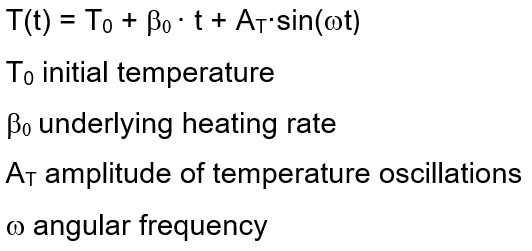
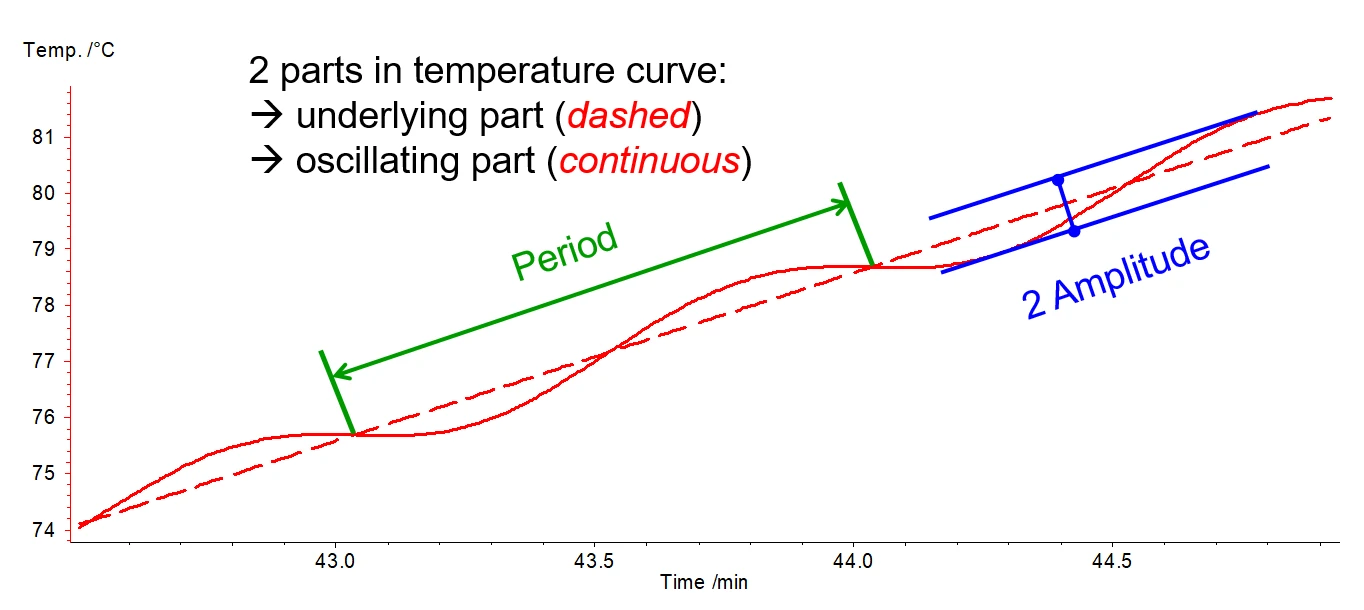
The response to the sinusoidal signal of the temperature is a sinusoidal DSC signal.
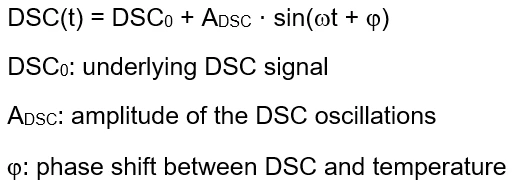
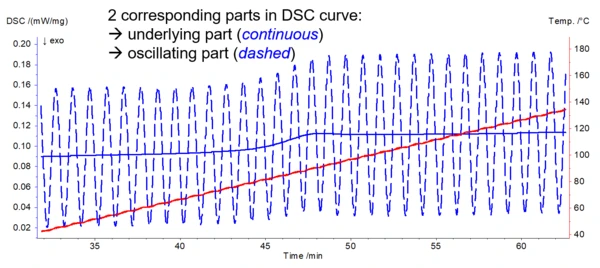
The total heat-flow DSC0, which corresponds to the standard DSC curve without modulation, can be separated into a reversing and a non-reversing part.
- The reversing part is related only to the heat capacity changes of the sample (Glass Transition TemperatureThe glass transition is one of the most important properties of amorphous and semi-crystalline materials, e.g., inorganic glasses, amorphous metals, polymers, pharmaceuticals and food ingredients, etc., and describes the temperature region where the mechanical properties of the materials change from hard and brittle to more soft, deformable or rubbery.glass transition, structural changes).
- The non-reversing part yields information about time-dependent processes (RelaxationRelaxation은 고무에 일정한 변형률이 가해지면, 변형률을 유지하기 위해 필요한 힘은 일정하지는 않지만 시간에 따라 감소합니다. 이러한 특성을 ‘응력 완화’라고 부릅니다. 응력완화의 원인이 되는 과정은 물리적 또는 화학적 그리고 정상적인 조건 하에, 둘 다 동시에 일어날 수 있습니다. relaxation, CrystallizationCrystallization is the physical process of hardening during the formation and growth of crystals. During this process, heat of crystallization is released.crystallization, Curing (Crosslinking Reactions)Literally translated, the term “crosslinking“ means “cross networking”. In the chemical context, it is used for reactions in which molecules are linked together by introducing covalent bonds and forming three-dimensional networks.curing, Decomposition reactionA decomposition reaction is a thermally induced reaction of a chemical compound forming solid and/or gaseous products. decomposition, evaporation).
Example: Accurate determination of the glass transition midpoint temperature
The following figure shows the DSC measurement on a polystyrene sample. A Glass Transition TemperatureThe glass transition is one of the most important properties of amorphous and semi-crystalline materials, e.g., inorganic glasses, amorphous metals, polymers, pharmaceuticals and food ingredients, etc., and describes the temperature region where the mechanical properties of the materials change from hard and brittle to more soft, deformable or rubbery.glass transition is detected. Its midpoint temperature cannot be evaluated accurately because it is overlapped by an endothermal peak due to the release of mechanical tensions.

The temperature-modulated measurement allows for separation of the two effects: The Glass Transition TemperatureThe glass transition is one of the most important properties of amorphous and semi-crystalline materials, e.g., inorganic glasses, amorphous metals, polymers, pharmaceuticals and food ingredients, etc., and describes the temperature region where the mechanical properties of the materials change from hard and brittle to more soft, deformable or rubbery.glass transition is detected in the reversing heat flow; the RelaxationRelaxation은 고무에 일정한 변형률이 가해지면, 변형률을 유지하기 위해 필요한 힘은 일정하지는 않지만 시간에 따라 감소합니다. 이러한 특성을 ‘응력 완화’라고 부릅니다. 응력완화의 원인이 되는 과정은 물리적 또는 화학적 그리고 정상적인 조건 하에, 둘 다 동시에 일어날 수 있습니다. relaxation peak in the non-reversing heat flow.
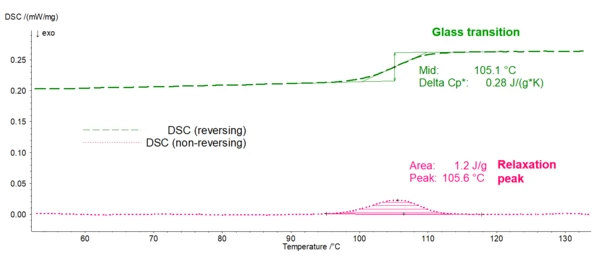
Important remark: “Reversing” doesn’t have the same meaning as “reversible”. All irreversible effects from a physical standpoint (Curing (Crosslinking Reactions)Literally translated, the term “crosslinking“ means “cross networking”. In the chemical context, it is used for reactions in which molecules are linked together by introducing covalent bonds and forming three-dimensional networks.curing, evaporation) are detected in the non-reversing heat flow. But the non-reversing heat flow also contains a portion of the reversible effects (melting). For example, the melting effect is detected in both the reversing and non-reversing heat flow, and can therefore not be separated by means of TM-DSC.